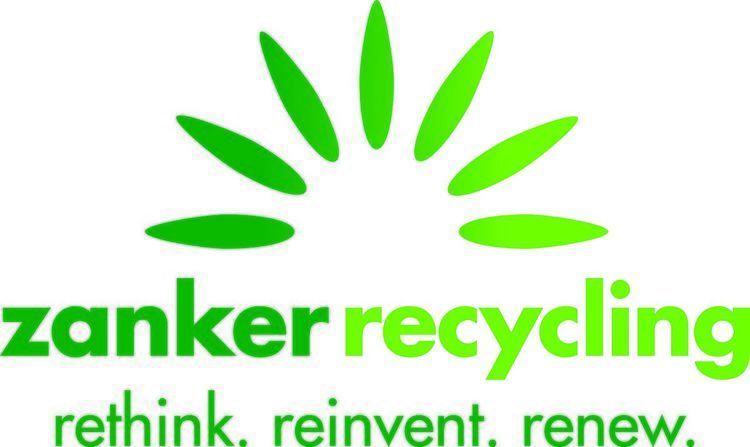Type Private Founder Richard Christina Number of employees 250 | Industry Waste management Area served United States Founded 1985 | |
 | ||
Key people Richard Cristina
(President)
Greg Ryan
(General Manager)
Michael Gross
(Director of Sustainability)
Scott Beal
(Operations Manager) Headquarters San Jose, California, United States | ||
Construction and demolition c d recycling mrf zanker recycling overview
Zanker Recycling is a privately owned company that developed from a landfill into a resource management and recycling facility, located in San Jose, CA.
Contents
- Construction and demolition c d recycling mrf zanker recycling overview
- Zanker recycling construction recycling operations
- Company History
- Current Operations
- Division Companies
- Customer Service
- Awards and Recognition
- References
Zanker recycling construction recycling operations
Company History
Zanker Recycling, owned and operated by Zanker Road Resource Mgt. LTD. , began operations in 1985 as a Class III landfill. To conserve its limited space, in 1987, Zanker installed the first permeant concrete recycling operation in the United States. In 1988, Zanker invented a demolition recycling operation, utilizing water that separated demolition waste into soil, concrete, metals, and wood. Ten years later, Zanker designed and constructed a demolition debris recycling operation that processed unsorted demolition debris materials at the rate of 70 tons per hour. The processing operation was known as "the rocket", which was constructed at Zanker's newly permitted facility adjacent to its first site. In the same year, Zanker began the operation of a construction and demolition (C&D) debris sorting operation. In 1998, Zanker also permitted and constructed the Z-Best Composting Facility, located in Gilroy, California. In 2005, the company saw a different type of material that could not be processed through the older demolition recycling operation. This material was referred to as interior demolition. This material is derived from the demolition of concrete tilt-up buildings, common in the Silicon Valley.
Current Operations
Demolition Recycling In 2015, Zanker designed and constructed a new demolition recycling operation that consisted of patented combination of conveyors, screens, magnets and air separation equipment, that separates the materials into manageable products. These products are then directed to other recycling operations on site or shipped directly to end product users.
Construction Waste Recycling Zanker Recycling began its first C&D recycling operation in 1986. Zanker Recycling processes an extensive amount of mixed debris and or construction wastes daily through a 240-foot long sorting conveyor system. The system removes up to 16 commodities from the materials waste stream. The sorting conveyor system includes elevated workstations, air separation units, trommel screens disc screens and magnets. Below the sort line are bunkers, where material is stored and routed for additional on-site processing, or loaded and hauled to other approved recyclers.
Sheetrock Recycling Zanker Recycling also processes gypsum waste through gypsum recycling, where it is known as sheetrock recycling. In the recycling process, materials such as wood, metals, and trash are removed and sent to other operations on-site. The processed gypsum is sent to agricultural users.
Wood Waste Recycling The wood waste operation consists of an electric grinder and trommel screen, and a series of electrically powered feed, transfer, and stacking conveyors. The operation processes clean wood loads hauled by customers, which are separated from mixed debris by staff or removed from the demolition debris processing operation. The wood waste is ultimately ground and screened to create wood chips and wood fines. Wood waste is used as biomass to power cogeneration facilities or marketed as mulch or soil amendments.
Concrete Recycling The concrete plant was one of the first in the nation to convert concrete debris into aggregate products, suitable for foundations and road construction. The recycling process beings with incoming clean concrete and reinforced concrete, where they are unloaded at the site. The cleaned concrete is loaded into a crusher, where the material passes under a belt magnet that removes steel. The material is then screened to remove oversized pieces. During the entire process, employees and machinery remove non-aggregate materials.
Division Companies
Z-Best The Z-Best Composting Facility (Z-Best) is a large-scale commercial compost facility that was built in 1997. The facility was permitted to receive an average of 1,500 tons per day of green/yard waste. In 2001, it was revised to include up to 600 tons per day of “in-vessel” municipal solid waste. As of 2016, the operation has 77 acres of land and is permitted to receive up to 1500 tons per day of both yard waste and municipal solid waste sources.
Florin Perkins In 2008, Zanker turned the old Florin Perkins Landfill in Sacremento into a construction waste recycling operation. These materials are processed using mechanical sorting equipment into a variety of marketable products. Besides construction wastes, the site also accepts source-separated wood waste, sheet rock, concrete, soil, asphalt shingles, wood shingles and demolition debris.
Zanker Landscape Materials Zanker Landscape Materials began operations in 2013 when a full-scale materials yard was constructed on the top of Zanker Road Landfill. Most products are made with 100% recycled products but the site also offers other common products such as redwood bark, cobble, and sand.
Zero Waste Energy Development Company (ZWEDC) ZWEDC is a dry fermentation anaerobic digestion facility located in San Jose, CA. The first large-scale commercial dry fermentation technology in the United States, ZWEDC produces green, renewable energy in the form of electricity, while composting organic materials and keeping them out of the landfill. The company was formed in 2011 by privately owned and locally operated companies, Greenwaste Recovery, Inc. (GreenWaste) and Zanker Recycling.
Customer Service
Zanker maintains more than 1,800 commercial account customers for its operations. Its outreach to customers focuses on diversion rates and materials acceptance, which are usually in the form of LEED letters and the company’s diversion rates for recycled materials. Zanker also provides online reviews of all transactions at the facility, including photos incoming loads. Additionally, all processing operations diversion rates are the third party certified by the Recycling Certification Institute.
Awards and Recognition
1999
2000
2005
2016
